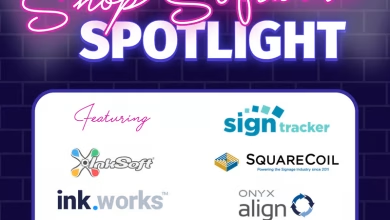Managing Customer Expectations (Direct-to-Garment Edition)
My advice when educating your customers on D2 printing is, keep it to the basics of need to know! The reality is, when a customer is overeducated on D2 printing, you are unintentionally setting their expectations at a much higher level than in the past. When I began screen printing years ago and before D2 printing existed, I would go to various stores and marvel at the lack of care and attention of printed garments being sold. I always pushed myself to produce much better quality than what the industry accepted. The relationship between the customer and myself was such that I provided a quality product while letting my work speak for itself, and they didn’t have to worry about what to expect. This, in turn, created a great base of loyal and repeat customers.
D2 adds an entirely different level of printing, but it has been my experience that when you overeducate your customer, and that expectation doesn’t get met, you will begin to see problems. You should always strive to output the best quality product you can, but even if the print is mediocre, it can still outshine what has been accepted for years. Of course, with an online society and the instant gratification of “I want it now,” these expectations are naturally evolving, but I try to refrain from setting that bar any higher than what is achievable. So to break it down, I never talk to a customer about how incredible this technology is; instead, I just let them know I can do one full color printed garment if they so choose. This, of course, has limitations, and if they choose this route, any education that needs to take place should be focused on how to achieve a great print.
Since every customer is different, instead of me explaining how to educate them, I’d rather give a few examples of great practices for your D2 operation to avoid spending needless time educating every customer that walks in the door.
Be clear on artwork.
Create a spec sheet. Make it look nice and supply it in PDF format, online, and even print a poster and hang it on your wall. I’m sure you heard the saying “garbage in, garbage out,” this applies to artwork and D2 printing just as much as any other area of your life. If someone gives you a low quality 72 dpi file, the D2 print will show that. I don’t mind tweaking the customer-provided design a little to achieve a better print, but reworking the file will cost them money. On your spec sheet include the file size, color mode you require, whether you want a transparent background or not, and definitely include an art fee if you need to rework their design. This tells the customer up front that artwork is important and so much so, that for a fee you will improve it for them. Almost always, they will work on getting you correct artwork to avoid that fee.
A sample is worth 1,000 words.
I would always have printed samples handily available to show the customer what to expect with D2 printing. These samples could pertain to low-quality vs. high-quality artwork, as mentioned above, but it is an extremely helpful tool when dealing with cotton vs. blends or polyester based garments. A picture is worth a 1,000 words, but a sample in hand is worth 10,000. When the customer can see and feel the sample, they have a better understanding of those limitations and can make a better decision. If you are an online business, a photo is good, but a video would work better. Again though, I wouldn’t so much educate them on the limitations of D2 printing, I would simply let them know that when printing low-run jobs, your method of printing has some limitations. Do this for every type of printing method you offer.
Talk turnaround time, but don’t overeducate.
Since a D2 operator can walk up to a printer, print, cure, and walk away with a finished shirt, an “educated” customer may expect faster turnaround times. This is another reason I choose not to overeducate a customer. The reality is, you are still running a business. If you intend to have a same-day turnaround, then make sure you have the provisions to meet that expectation. If your turnaround time is two weeks, then the same rule applies. This is your business, and for most people, it’s their livelihood, so the actions you take should set you up for success, not failure. Whatever it is you end up practicing, keep it consistent.
Although these are only a few ideas, my suggestion is if you can simplify anything in your D2 business to avoid repeating yourself to customers, work on those. Streamlining your business to run efficiently is critical for success in today’s market and educating your customer to only those “need to know” items, will show them you care and keep them coming back for more.




